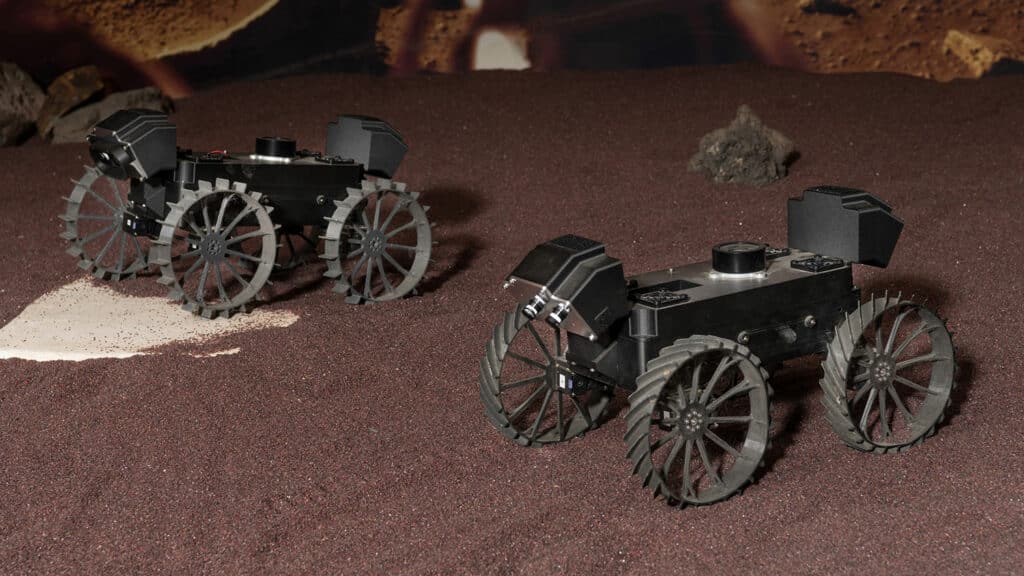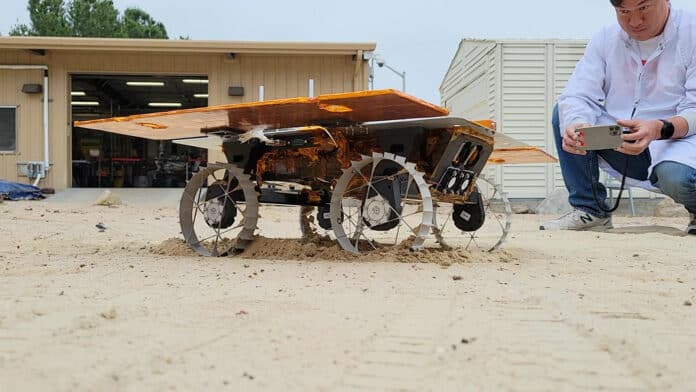NASA is sending a trio of miniature autonomous rovers to the Moon with the aim of boosting the efficiency of exploration missions. Working together without direct human input, the four-wheeled, carry-on-suitcase-sized moon rovers will map the lunar surface in 3D, using cameras and ground-penetrating radar.
Known as Cooperative Autonomous Distributed Robotic Exploration (CADRE), the intrepid trio will travel to the Moon aboard Intuitive Machines’ third lunar lander, IM-3, in 2024 as part of NASA’s CLPS (Commercial Lunar Payload Services) initiative. CADRE’s three small rovers will be lowered onto the Reiner Gamma region of the Moon via tethers.
Reiner Gamma is a geographical feature of the Moon known as a lunar swirl. It is located in the western Oceanus Procellarum, on the western edge of the near side of the Moon and just north of the equator.
The rovers will need to survive the harsh thermal environment near the Moon’s equator, which poses a challenge for such small robots. In the searing sunlight, the rovers could face midday temperatures of up to 237 degrees Fahrenheit (114 degrees Celsius). Made with commercial off-the-shelf parts and custom-built components, the rovers must be robust enough to make it through the daytime heat while being compact and lightweight.

The trio of miniature solar-powered rovers will drive to find a sunbathing spot, where they’ll open their solar panels and charge up. Then they’ll spend about 14 Earth days – the daylight hours of a single lunar day – carrying out experiments designed to test their capabilities.
“Our mission is to demonstrate that a network of mobile robots can cooperate to accomplish a task without human intervention – autonomously,” said Subha Comandur, the CADRE project manager at NASA’s Jet Propulsion Laboratory in Southern California. “It could change how we do exploration in the future. The question for future missions will become: ‘How many rovers do we send, and what will they do together?'”
The rovers will receive orders from their 13-foot-tall (4-meter-tall) lander. Then the little robots will elect a leader, which will distribute work assignments to accomplish the collective goal. Each rover will figure out how best to safely complete its assigned task.
“The only instruction is, for example, ‘Go explore this region,’ and the rovers figure out everything else: when they’ll do the driving, what path they’ll take, how they’ll maneuver around local hazards,” said JPL’s Jean-Pierre de la Croix, CADRE’s principal investigator, in the press release. “You only tell them the high-level goal, and they have to determine how to accomplish it.”
The rovers will face several tests, all within view of a monitoring camera on the base station atop the lander. The first is to drive in formation and stay on course while relying on sensors to avoid obstacles. In a second experiment, the rovers will each take a path of their own choosing to explore a patch of lunar surface covering 4,300 square feet (400 square meters) while using stereo cameras to create a topographic 3D map.
In addition, the rovers will be packing multistatic ground-penetrating radars, providing a glimpse as far as 33 feet (10 meters) into the subsurface.
The miniature rovers are meant to show how multi-robot missions could potentially enable new science or support astronauts. By taking simultaneous measurements from multiple locations, CADRE will also demonstrate how multi-robot missions can record data impossible for a single robot to achieve – a tantalizing prospect for future missions.
